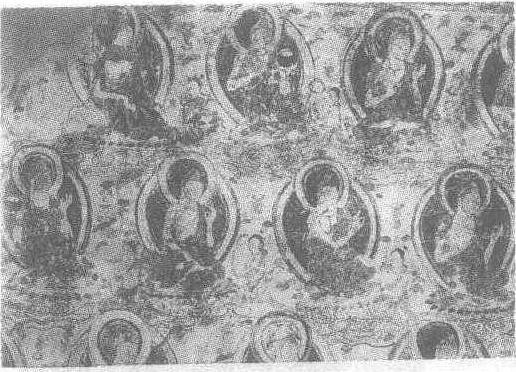说法图(局部)壁画
约为唐宋。新疆维吾尔自治区库车县库木吐喇石窟第13窟券顶北侧壁壁画。佛居中结跏趺坐,左右两旁各跪一身菩萨,组成说法场面。画面的上方飘浮着排箫、鼓等乐器。画面的下方有流云承托。此图在绘法上融合了龟兹地区和中原内地的不同风格的技法。人物的肌肤施以晕染,具有典型的当地绘画风格。图中那富于装饰性的如意形流云则完全是汉族绘画风格的体现。

| 词条 | 说法图(局部)壁画 |
| 类别 | 中文百科知识 |
| 释义 | 说法图(局部)壁画约为唐宋。新疆维吾尔自治区库车县库木吐喇石窟第13窟券顶北侧壁壁画。佛居中结跏趺坐,左右两旁各跪一身菩萨,组成说法场面。画面的上方飘浮着排箫、鼓等乐器。画面的下方有流云承托。此图在绘法上融合了龟兹地区和中原内地的不同风格的技法。人物的肌肤施以晕染,具有典型的当地绘画风格。图中那富于装饰性的如意形流云则完全是汉族绘画风格的体现。
|
| 随便看 |
开放百科全书收录579518条英语、德语、日语等多语种百科知识,基本涵盖了大多数领域的百科知识,是一部内容自由、开放的电子版国际百科全书。